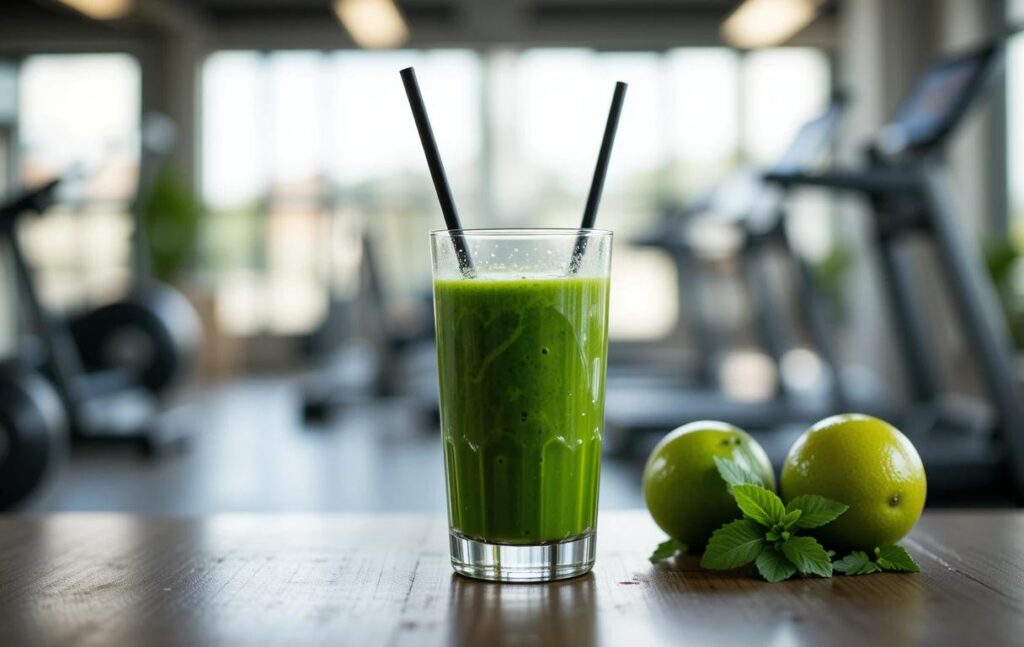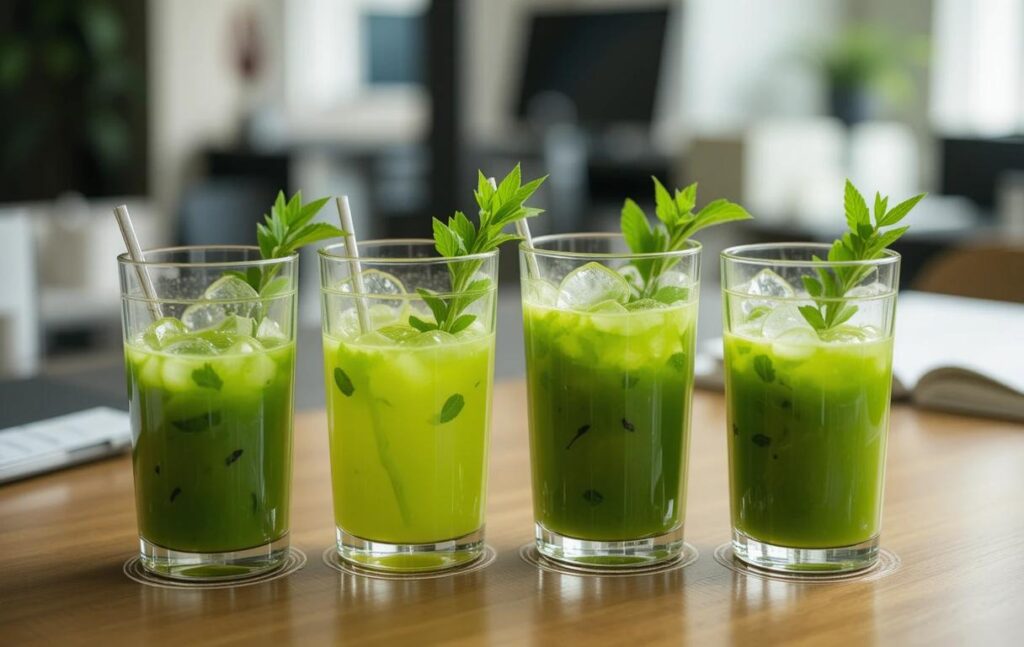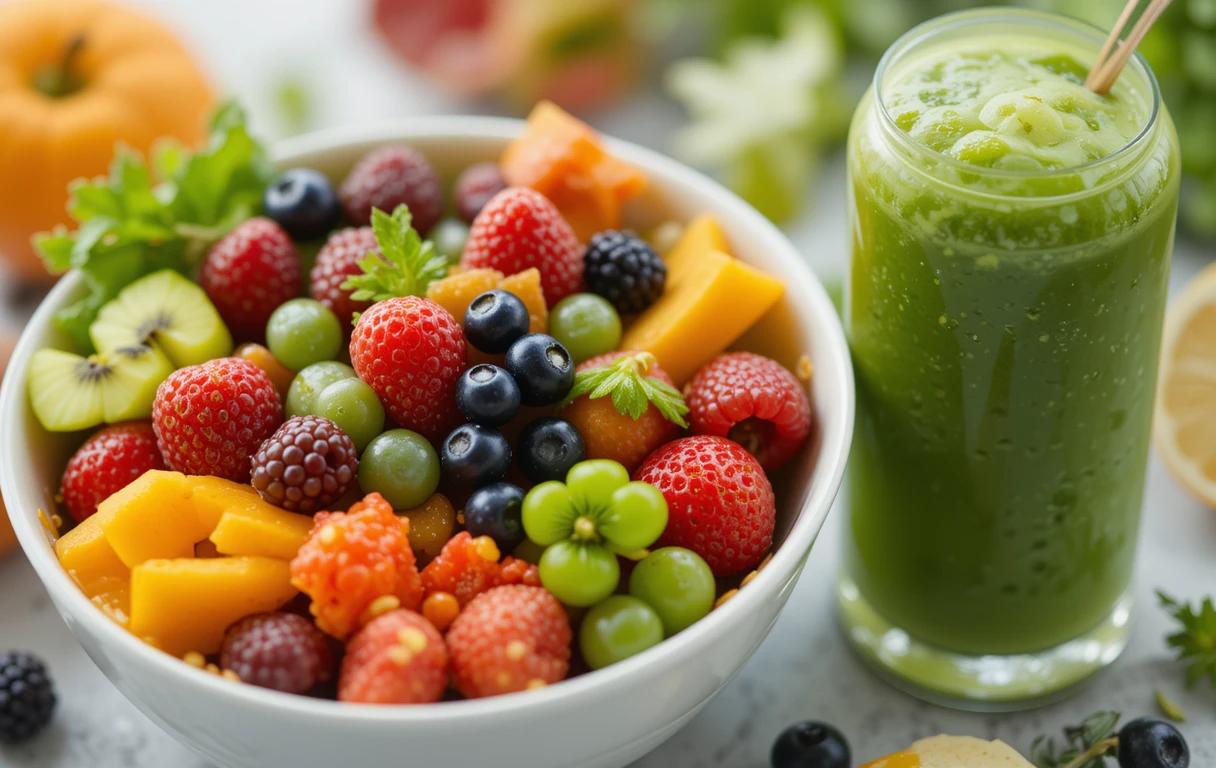In the quest for effective and sustainable weight loss, many wonder, is juicing a good way to lose weight? Juicing, with its promise of nutrient-packed beverages, seems like an appealing option for shedding pounds while maintaining energy. But does it live up to the hype?
In this article, we’ll explore the science behind juicing for weight loss, its benefits, potential drawbacks, and how it compares to other popular weight loss methods. By the end, you’ll have a clear understanding of whether juicing can be a sustainable part of your journey toward a healthier lifestyle.
What is Juicing?
Juicing is the process of extracting liquid from fresh fruits and vegetables, separating it from the pulp and fiber. This liquid, often referred to as juice, is rich in vitamins, minerals, and antioxidants. Many people turn to juicing as a way to boost their nutrient intake, cleanse their systems, or jumpstart a weight loss journey.
Types of Juicing Methods
Juicing methods vary depending on the equipment used and the desired outcomes. Each method has its pros and cons, which can impact the nutritional value, texture, and flavor of the juice. Here’s an overview of the most common juicing techniques:
1. Cold-Pressed Juicing
- How It Works: Cold-pressed juicing uses a hydraulic press to extract juice from fruits and vegetables. This method avoids heat, preserving the maximum amount of nutrients and enzymes.
- Pros:
- High nutrient retention.
- Longer shelf life (up to 72 hours when refrigerated).
- Produces smooth, pulp-free juice.
- Cons:
- Expensive equipment.
- Time-consuming process.
- Best For: Those prioritizing nutrient content and willing to invest in premium juicing technology.
2. Centrifugal Juicing
- How It Works: Centrifugal juicers use a spinning blade to shred fruits and vegetables. The centrifugal force separates juice from the pulp.
- Pros:
- Fast and easy to use.
- Affordable and widely available.
- Suitable for hard fruits and vegetables.
- Cons:
- Generates heat, which may degrade some nutrients.
- Juice may separate quickly and needs immediate consumption.
- Best For: Beginners looking for a quick and cost-effective juicing solution.
3. Masticating (Slow) Juicing
- How It Works: Also known as slow or single-auger juicing, this method grinds and presses fruits and vegetables at a low speed, reducing heat and oxidation.
- Pros:
- Preserves nutrients and enzymes.
- Handles leafy greens and wheatgrass efficiently.
- Produces juice with less foam and oxidation.
- Cons:
- Slower process compared to centrifugal juicers.
- More expensive than centrifugal models.
- Best For: Those who value high-quality juice and plan to juice leafy greens frequently.
4. Twin-Gear (Triturating) Juicing
- How It Works: This advanced method uses two interlocking gears to crush and press ingredients, extracting juice with minimal heat and oxidation.
- Pros:
- Retains maximum nutrients and enzymes.
- Effective for a wide variety of ingredients, including leafy greens and wheatgrass.
- Produces high juice yield.
- Cons:
- Bulky and expensive equipment.
- Longer prep and cleaning time.
- Best For: Serious juicing enthusiasts or those following a juice-centric lifestyle.
5. Hand-Squeezing (Manual Juicing)
- How It Works: Manual juicing involves squeezing the juice from fruits (typically citrus) using a hand press or citrus juicer.
- Pros:
- Inexpensive and simple to use.
- Ideal for small batches of juice.
- No electricity required.
- Cons:
- Limited to soft, juicy fruits like oranges, lemons, and limes.
- Labor-intensive for large quantities.
- Best For: Occasional juicing of citrus fruits.
6. Blending (Smoothies)
- How It Works: Although not traditional juicing, blending combines whole fruits and vegetables into a thick, fiber-rich smoothie.
- Pros:
- Retains fiber for better satiety.
- Accommodates a wide variety of ingredients.
- No pulp waste.
- Cons:
- Texture may not appeal to those looking for pulp-free juice.
- Requires a powerful blender for hard ingredients.
- Best For: Those who want a nutrient-packed beverage with added fiber.
Why Juicing Appeals to Weight Loss Enthusiasts

Juicing has captured the attention of weight loss enthusiasts for its simplicity, convenience, and promise of delivering a high concentration of nutrients in a single serving. But what makes juicing particularly appealing for those aiming to shed extra pounds? Let’s break it down.
1. Nutrient Density in a Compact Form
Juicing allows you to consume a variety of fruits and vegetables in one glass, offering a concentrated dose of vitamins, minerals, and antioxidants. This nutrient boost can help energize your body and support overall health, especially when cutting calories.
- Example: A single glass of green juice might contain spinach, kale, celery, cucumber, and a splash of lemon, packing in nutrients that are harder to consume in large quantities through solid food.
2. Convenient Meal Replacement
For busy individuals, juicing provides a quick and portable option for a healthy snack or light meal. Many people replace one or two meals a day with juices to create a calorie deficit, which is essential for weight loss.
- Tip: To make your juice more filling, pair it with a small serving of protein, such as a boiled egg or a handful of nuts.
3. Boosts Hydration
Proper hydration is a key factor in weight loss, and juices contribute to your daily fluid intake. Ingredients like cucumber and watermelon have high water content, helping to keep you hydrated while offering essential nutrients.
4. Supports Detoxification
Juices, especially those made from vegetables like kale, parsley, and celery, are often associated with detoxification. While your body naturally detoxifies through the liver and kidneys, nutrient-rich juices can support these processes, making you feel lighter and more refreshed.
5. Helps Satisfy Sweet Cravings
For those struggling to cut sugary snacks from their diet, naturally sweet juices made with fruits like oranges, apples, or berries can serve as a healthier alternative. They satisfy your sweet tooth while avoiding processed sugars.
6. Encourages Healthier Habits
Starting a juicing routine often motivates people to adopt healthier eating habits overall. The commitment to juicing can lead to greater awareness of food choices and portion sizes, promoting a more balanced lifestyle.
How Juicing Can Support Weight Loss
1. Low-Calorie Intake
Juicing is inherently low in calories, especially when it primarily uses vegetables like kale, spinach, cucumber, and celery. For instance, a green juice made from cucumbers, kale, and lemon may contain fewer than 100 calories per serving, making it a great replacement for high-calorie snacks or meals.
2. Increased Nutrient Absorption
By removing the fiber, juices deliver nutrients directly to the bloodstream. This immediate absorption can boost energy levels and help curb unhealthy cravings, potentially aiding weight loss.
3. Promotes Hydration
Staying hydrated is key for weight loss, and juices contribute to overall fluid intake. Proper hydration supports metabolism, digestion, and even the body’s natural detoxification processes.
Potential Downsides of Juicing
While juicing offers several benefits, it’s not without its drawbacks. It’s important to understand these limitations to decide whether juicing is the right approach for your weight loss journey.
1. Lack of Protein and Fiber
Juicing removes fiber from fruits and vegetables, which is essential for healthy digestion and prolonged satiety. Without fiber, you may feel hungry sooner, leading to overeating. Additionally, juices lack protein—a macronutrient crucial for muscle maintenance and metabolic health.
- Example: A whole apple provides 4 grams of fiber, while apple juice has almost none.
2. High Sugar Content
Fruit-based juices can be deceptively high in sugar, even if they’re made from natural sources. Consuming too much sugar, even from fruit, can lead to blood sugar spikes and crashes, potentially stalling weight loss or causing energy slumps.
- Tip: Use a higher ratio of vegetables to fruits in your juices to keep sugar levels in check.
3. Short-Term Results
Juicing for weight loss often provides quick results because it can significantly reduce calorie intake. However, these results may not be sustainable. Once normal eating resumes, the weight often returns, making it more of a temporary fix than a long-term solution.
4. Potential Nutrient Deficiencies
A juice-only diet can lead to deficiencies in essential nutrients like healthy fats, iron, and calcium, which are not typically abundant in juice. Over time, these deficiencies could negatively impact your overall health.
Comparing Juicing to Other Weight Loss Methods
Juicing isn’t the only weight loss strategy. Let’s see how it stacks up against other popular methods.
1. Juicing vs. Whole Foods Diet
A whole foods diet emphasizes eating minimally processed foods, including whole fruits, vegetables, grains, and proteins.
- Advantages of Whole Foods Diet:
- Retains fiber and protein for longer satiety.
- More balanced nutrient intake.
- Advantages of Juicing:
- Convenient and quick.
- Easier to consume a variety of vegetables in one sitting.
2. Juicing vs. Intermittent Fasting
Intermittent fasting involves cycles of eating and fasting, which can help with calorie control and insulin sensitivity.
- Advantages of Intermittent Fasting:
- Helps regulate appetite hormones.
- Can be paired with nutrient-dense meals for a sustainable lifestyle.
- Advantages of Juicing:
- Provides a nutrient-dense option during eating windows.
- Keeps you hydrated during fasting periods.
Which Method Works Best?
The best method depends on individual preferences and lifestyle. Combining juicing with a whole foods diet or intermittent fasting may offer the best of both worlds.
How to Incorporate Juicing into a Healthy Lifestyle

Juicing can be a valuable part of a weight loss plan if approached with balance and mindfulness. Instead of relying solely on juice diets, combine them with healthy habits to achieve sustainable results.
1. Balance Juicing with Solid Foods
While juices provide essential vitamins and minerals, they shouldn’t replace whole meals entirely. Incorporate juices as a snack or supplement to your diet rather than a full meal replacement.
- Example: Pair a green juice with a protein-rich breakfast like eggs or a serving of Greek yogurt.
2. Choose Low-Sugar Options
Opt for juices with a higher vegetable-to-fruit ratio to reduce sugar content. Vegetables like spinach, kale, cucumber, and celery are excellent base ingredients. Use fruits like berries or green apples sparingly for sweetness without adding excessive sugar.
3. Add Protein and Healthy Fats
To make your juices more filling, consider pairing them with protein sources or adding supplements like collagen powder. Healthy fats, such as a handful of nuts or a slice of avocado, can also help you stay full longer.
4. Plan Juice Cleanses Wisely
If you decide to try a juice cleanse, limit it to a short period—like 1-3 days—and follow it with a balanced diet to avoid nutrient deficiencies. Use the cleanse as a reset, not a long-term solution.
5. Stay Hydrated and Active
Juices can contribute to hydration, but don’t rely on them alone. Drink plenty of water throughout the day and engage in regular physical activity to boost your metabolism.
Common Juicing Myths Debunked
Let’s address some popular myths about juicing and weight loss.
Myth 1: Juicing is a Complete Detox Solution
Fact: Your body naturally detoxifies itself through the liver and kidneys. While juices can support these processes with vitamins, they aren’t a substitute for a healthy diet.
Myth 2: Juicing Alone Can Help You Lose Weight
Fact: Juicing can aid in calorie reduction, but long-term weight loss requires a balanced diet, exercise, and sustainable habits.
Myth 3: All Juices Are Healthy
Fact: Store-bought juices often contain added sugars and preservatives, which can undermine your weight loss efforts. Always opt for fresh, homemade juices.
Top 5 Healthy Juicing Recipes for Weight Loss
Here are five delicious and low-calorie juice recipes to get you started:
1. Green Detox Juice
- Ingredients: Spinach, cucumber, kale, green apple, and lemon.
- Benefits: Low in calories, rich in antioxidants.
2. Carrot-Orange Energy Boost
- Ingredients: Carrot, orange, ginger, and turmeric.
- Benefits: Supports immunity and digestion.
3. Beetroot Cleanse
- Ingredients: Beetroot, celery, cucumber, and lime.
- Benefits: Boosts blood circulation and detoxifies the body.
4. Pineapple-Mint Refresh
- Ingredients: Pineapple, mint leaves, and cucumber.
- Benefits: A refreshing and hydrating option.
5. Spicy Green Kick
- Ingredients: Kale, cucumber, celery, jalapeño, and lime.
- Benefits: Increases metabolism with a spicy twist.
FAQs About Juicing for Weight Loss
Here are some of the most frequently asked questions about juicing and its role in weight loss:
1. Can I lose weight by drinking only juice?
While a juice-only diet may result in quick weight loss due to calorie reduction, it’s not a sustainable or healthy long-term approach. It’s best to pair juicing with a balanced diet and regular exercise.
2. What is the best time of day to drink juice?
Morning is often the best time to drink juice, as your body can efficiently absorb nutrients on an empty stomach. However, juices can also be enjoyed as a mid-afternoon snack or pre-workout energy boost.
3. How many juices should I drink per day for weight loss?
One to two servings of fresh juice per day can be beneficial as part of a balanced diet. Overconsumption may lead to excessive sugar intake or nutrient imbalances.
4. Can I store fresh juices for later?
Fresh juices are best consumed immediately to retain their nutrients. If you must store them, use an airtight container and refrigerate for up to 24 hours.
5. What fruits and vegetables are best for juicing?
- Low-Sugar Vegetables: Kale, spinach, cucumber, celery, and zucchini.
- Fruits for Sweetness: Green apple, berries, and citrus fruits like lemon or lime.
These options provide essential nutrients while keeping calorie counts low.
6. Is juicing better than eating whole fruits and vegetables?
Juicing can complement a healthy diet but should not replace whole fruits and vegetables, which provide fiber and additional satiety.
Conclusion: Is Juicing Right for You?
Juicing can be a valuable tool in your weight loss journey, but it’s not a one-size-fits-all solution. While it offers benefits like increased nutrient intake and hydration, it also has limitations, such as low fiber and protein content. For sustainable weight loss, consider incorporating juicing into a balanced diet rather than relying on it exclusively.
Ultimately, the question is juicing a good way to lose weight? depends on your lifestyle, preferences, and overall health goals. By making informed choices and practicing moderation, juicing can be a refreshing and healthful addition to your wellness routine.
Recipe: How Much Juice Is Really in One Lime?
Related Recipes
- “Tuna Tomato Sauce Pasta Recipe“: A tomato-based recipe showcasing another way to use tomatoes.
- “Baked Chicken Fettuccine Alfredo with Broccoli“: Another comforting dish that can be complemented with tomato-based sauces.
Ingredient-Focused Content
- “Lions Mane Mushroom Recipe“: Suggest using a tomato gravy as a flavorful addition for plant-based dishes.
Cooking Techniques and Enhancements
- “Mango Habanero Salsa“: Explore complementary uses of sauces and gravies for flavor diversity.
Storage and Reuse Tips
- “Sous Vide Recipes“: Recommend tomato gravy as a sauce for sous vide-cooked meats or vegetables.
- “Ocean Spray Cranberry Sauce Recipe“: Guide readers on making and storing sauces, including tomato gravy.

